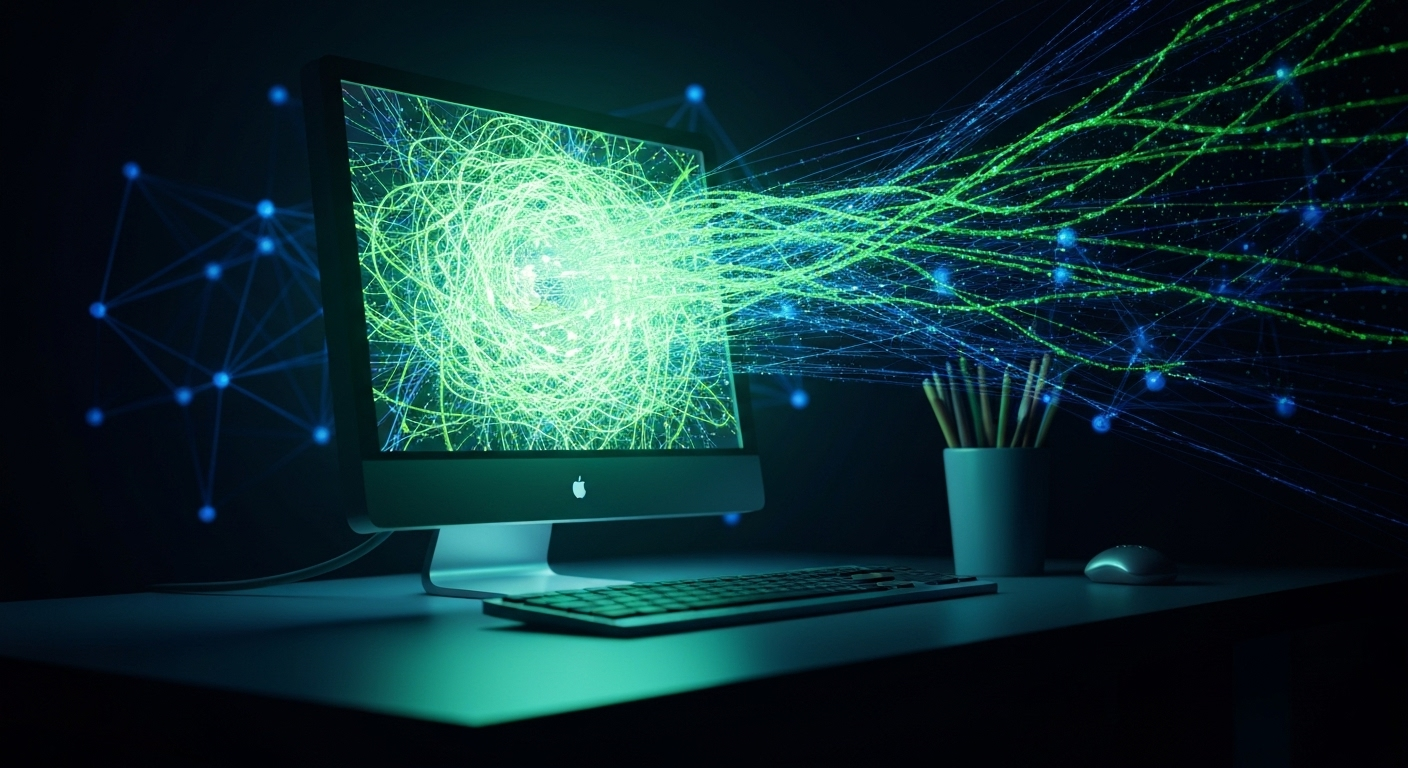The notorious XWorm malware is back and more dangerous than ever. After a period of uncertainty following its original developer’s disappearance, the latest version, XWorm 6.0, has emerged in the wild. This completely recoded remote access trojan (RAT) is not just an update; it is a significant escalation in the threat landscape. Its return serves as a crucial reminder that malware threats can evolve and resurface with enhanced capabilities, demanding renewed vigilance from security professionals and users alike.
Key Features and Innovations in XWorm 6.0
XWorm 6.0 introduces several new features that make it a formidable threat. The malware has been “fully re-coded,” according to its new promoters, which includes a fix for a critical remote code execution flaw found in previous versions. This overhaul signifies a major step in XWorm’s evolution, enhancing its stability and effectiveness for threat actors.
The most significant innovation is its highly flexible modular design. Built around a core client, XWorm 6.0 uses a versatile array of plugins to expand its functionality. This architecture enables attackers to tailor their attacks by deploying specialized tools for data theft, surveillance, or system control, thereby complicating your defense against them. Are your current security measures prepared for such a dynamic malware threat?
Enhanced Plugin Architecture and Functionality
The power of XWorm 6.0 lies in its sophisticated use of plugins. This modular design transforms the malware from a single program into a full-featured platform for cybercrime. When a threat actor wants to use a new capability, the command-and-control (C2) server sends a command with the plugin’s unique hash. The XWorm client on your infected machine then checks if it already has the plugin; if not, it requests the component from the server, which is then loaded directly into memory.
This method allows the remote access tool to be lightweight initially and add powerful features on the fly. This versatile array of plugins enables a wide range of malicious actions without needing to reinstall or update the core malware. This makes detection more challenging as the malware threat can change its behavior at any moment.
Some of the pivotal plugins include:
- RemoteDesktop.dll: Grants the attacker a remote session to interact directly with your machine.
- FileManager.dll: Provides full filesystem access, allowing the operator to copy, move, delete, and exfiltrate your files.
- Ransomware.dll: Enables the threat actor to encrypt your files and demand a ransom.
Advanced Evasion and Anti-Analysis Techniques
To ensure a successful attack, XWorm 6.0 employs advanced evasion techniques to bypass security tools and remain hidden on your system. A key part of its infection chain involves using a PowerShell script to inject the malware into legitimate Windows processes, such as RegSvcs.exe. This “process hollowing” technique makes the malicious activity appear as normal system behavior, helping it slip past basic antivirus solutions.
Furthermore, the malware is designed with sophisticated anti-analysis capabilities. It actively checks for signs of a virtual machine or sandbox environment, which security researchers commonly use to study malware safely. If it detects such an environment, it immediately terminates its execution to prevent analysis. This makes it difficult for security experts to reverse-engineer and develop defenses against it.
These evasive maneuvers are critical to its success and include:
- Checking for debuggers or monitoring tools running on the system.
- Using fileless attacks by loading payloads directly into the memory regions of the current process.
- Leveraging legitimate system components to carry out malicious commands complicates the detection of its remote access functions.
Impact of XWorm 6.0 Variants on Windows Security
The resurgence of XWorm 6.0 brings significant risks to all Windows systems. Threat actors actively use this malware threat to compromise networks, steal credentials, and deploy other malware families. Its ability to gain administrator privileges and operate undetected for long periods makes it particularly dangerous for both individual users and corporate environments.
The impact can be devastating, ranging from financial loss to severe data breaches. The various real-world attack scenarios seen in the wild demonstrate its versatility and effectiveness. Understanding how it accomplishes data theft and the specific risks it poses is the first step toward building a stronger defense.
Data Theft Capabilities and Comparison With Previous Versions
XWorm 6.0 has dramatically enhanced its data theft capabilities compared to older versions. It uses a collection of specialized plugins like WindowsUpdate.dll and merged.dll to extract a wide range of sensitive data. This includes login credentials from over 35 web browsers, email clients, cryptocurrency wallets, and even Wi-Fi passwords. The rapid evolution of XWorm is evident in its ability to bypass modern browser security, such as Chrome’s v20 app-bound encryption, to steal cookies, passwords, and credit card information.
Unlike its predecessors, which had more limited stealing functions, XWorm 6.0 is a comprehensive information stealer. The original developer, XCoder, laid the groundwork, but this new version perfects the art of data exfiltration. The malware is designed to gather as much valuable information as possible before being detected.
Here is a comparison with the previous version, XWorm 5.6:
| Feature | XWorm 5.6 | XWorm 6.0 |
|---|---|---|
| RCE Vulnerability | Contained a known remote code execution flaw. | The flaw has been patched, making it more secure for attackers to use. |
| Encryption Key | Used a default, static key for C2 communication. | Uses a different default key, complicating analysis of new samples. |
| Core Code | Based on an older build. | Described as “fully re-coded” with significant updates. |
| Plugins | Had a more limited set of plugins. | Supports over 35 plugins, including ransomware and rootkit modules. |
Risks to Windows Users and Real-World Attack Scenarios
The primary risk to Windows users comes from the common delivery method of XWorm: phishing campaigns. You might receive an email with a malicious attachment, such as a JavaScript file or a Windows shortcut (.LNK), disguised as a legitimate document. Once opened, it triggers a chain reaction that installs the malware, giving an attacker a backdoor into your system. This makes social engineering a critical component of its attack vector.
Once inside, this remote access tool can serve as a gateway for other malware. Researchers have observed XWorm operators deploying additional threats, turning a single infection into a full-blown crisis. The critical importance of robust security measures cannot be overstated, as the consequences go far beyond a single compromised device.
Real-world attack scenarios have shown XWorm deploying malware such as:
- DarkCloud Stealer and Snake KeyLogger: To capture even more sensitive information.
- Coin Miners: To use your system’s resources for mining cryptocurrency.
- Remcos RAT: To establish another layer of remote access and persistence.
Detection Signs and Mitigation Strategies
Even though XWorm is designed to be stealthy, there are detection signs that can indicate an infection. Unusual network activity, unexpected system slowdowns, or the appearance of strange files could be indicators of compromise. Monitoring for these signs is a key part of an effective defense strategy against this evasive malware.
Fortunately, there are several mitigation strategies you can implement to protect your systems. A multi-layered approach that combines proactive defenses with responsive tools is your best bet. By understanding the indicators of an infection and implementing recommended protective measures, you can significantly reduce the risk posed by XWorm 6.0.
Indicators of Compromise Linked to XWorm 6.0
Identifying XWorm infections requires looking for specific technical clues known as Indicators of Compromise (IOCs). These are the digital breadcrumbs the malware leaves behind. Security experts, like Trellix researchers Niranjan Hegde and Sijo Jacob, have identified several IOCs that can help you detect XWorm on your network. These include unique file hashes, specific IP addresses used for command-and-control servers, and certain registry key modifications.
One of the most common signs of XWorm infections is the presence of malicious LNK files or PowerShell scripts executing suspicious commands. The malware often injects itself into the memory regions of the current process of legitimate applications to hide its activity, a behavior that advanced security tools can flag.
Key IOCs linked to XWorm 6.0 include:
- File Hashes (SHA256): Specific hashes for XWorm components, such as
570e4d52b259b460aa17e8e286be64d5bada804bd4757c2475c0e34a73aeb869forXWormClient.exe. - Network Traffic: Outbound connections to known malicious IP addresses, like
94.159.113[.]64on port4411. - Registry Keys: Creation of keys under
HKCU\SOFTWARE\for storing plugins.
Recommended Protective Measures for Organizations
Protecting your organization from XWorm 6.0 requires implementing robust security measures across multiple layers of your IT environment. Relying on a single line of defense is not enough to stop such a dynamic threat. A comprehensive strategy should focus on preventing the initial infection, detecting malicious activity quickly, and responding effectively to contain any breach.
Start by strengthening your first line of defense. Since phishing is the primary attack vector, employee training and advanced email security are crucial. Continuous network monitoring is also essential to spot unusual communications with C2 servers, which could indicate that a device is compromised and is trying to download additional payloads. Pairing these with strong endpoint protection provides a formidable defense.
Here are some recommended protective measures:
- Deploy Advanced Endpoint Security: Use solutions like Trellix Endpoint Security with an active Antimalware Scan Interface (AMSI) to detect and block malicious scripts and fileless attacks.
- Enhance Email and Web Defenses: Filter out malicious attachments and block access to known malicious domains to prevent the initial dropper from reaching your users.
- Restrict PowerShell Usage: Enforce policies that limit PowerShell execution to only signed and trusted scripts to disrupt the infection chain.
- Implement Network Segmentation: Isolate critical systems to limit the lateral movement of an attacker if a device in your network is compromised.
Conclusion
In summary, understanding the impact of XWorm 6.0 variants is crucial for maintaining robust Windows security. The advancements in its features and evasion techniques highlight the necessity for users and organizations to stay vigilant. By recognizing the signs of compromise and implementing recommended protective measures, you can significantly reduce your risk of falling victim to this evolving threat. For more insights on enhancing your cybersecurity practices, feel free to check out our related blog, where we delve deeper into protective strategies and tools. Stay informed, stay secure!
Frequently Asked Questions
How Is XWorm 6.0 Distributed, and Where Has It Been Detected Recently?
XWorm 6.0 is primarily distributed through social engineering tactics like phishing emails containing malicious attachments or links. The latest version has also been advertised on cybercrime forums and spread via Telegram channels. It has been detected globally, with a high rate of adoption among threat actors targeting Windows systems.
What Open-Source Resources Can Help Analyze XWorm 6.0?
While the malware itself is not open-source, detailed threat intelligence reports from security firms like Trellix provide in-depth analysis, indicators of compromise, and insights into XWorm’s evolution. These reports are invaluable open-source resources for understanding the tactics and techniques used by various malware families and strengthening your defenses.
What Should Users Do If Their System Is Infected With XWorm 6.0?
If you suspect your system is infected, immediately disconnect it from the network to prevent further data theft or lateral movement. Use a reputable security solution with an updated anti-malware scan interface to run a full system scan. For persistent infections, it is best to seek professional help to ensure all malicious components are removed.

Zak McGraw, Digital Marketing Manager at Vision Computer Solutions in the Detroit Metro Area, shares tips on MSP services, cybersecurity, and business tech.

